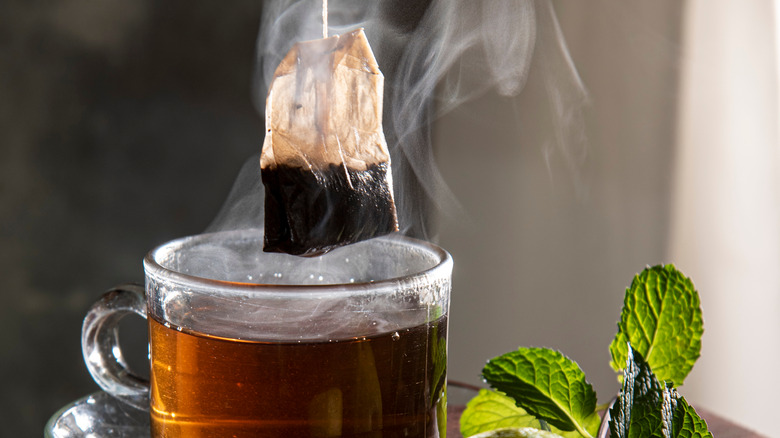The Packaging Misunderstanding That Led To Tea Bags
From its origins in Tang dynasty China to its introduction to Europe, and eventually its takeover as the national drink of the United Kingdom, tea has played an important role in many societies throughout history.
According to the UK Tea & Infusions Association, after Portuguese princess Catherine of Braganza married King Charles II and influenced the adoption of tea as a fashionable drink among British nobility in the 17th century, the drink spent a few centuries infiltrating all parts of British society, including among the poor. Enjoyed at breakfast to start the day, at afternoon tea parties to curve hunger before dinner, or basically at any other point during the day, tea was and is a treasured part of British life. So much so that it even remained a priority during food rationing in both World Wars to boost morale.
With numerous tea varieties on the market, including black, green, and herbal, anyone should be able to find their cup of tea. But tea hasn't always looked the way it does today. While we're used to small bags of tea in boxes at the grocery store, the tea bag was a more modern, and accidental, invention.
An accidental invention
While Chinese tea drinkers generally didn't use strainers, according to Tea Muse, British brews tended to use black teas with smaller leaves than Chinese varieties, which meant more chances for tea leaves to slip into your cup or mouth. Before tea bags, tea drinkers were looking for new methods and devices to easily remove used tea leaves, and this led to the use of tea strainers. Tea Muse explains that tea strainer baskets became popular during the Victorian era, designed to sit on top of the cup and catch leaves as tea was poured from the pot.
Metal tea infusers — little balls made of mesh or perforated stainless steel connected to chains that held loose tea leaves while they steeped — were designed to prevent this problem, and they became popular in the 19th century, according to the UK Tea & Infusions Associations (UKTIA). The tea bag, on the other hand, was invented by accident by 20th-century American tea merchant Thomas Sullivan, according to Tea Muse. In 1908, Sullivan sent tea samples in little silk bags to his clients. Clients mistakenly assumed the bag was meant to hold the tea in the water like a tea strainer and boiled the tea still inside the bag. Later Sullivan switched to gauze then paper baggies, connected to a string with a tag, and voilà — the modern-day tea bag was born.
This accidental invention gained major popularity in the United States in the 1920s but didn't gain British popularity until later in the century, after the wars. Today, paper tea bags reign supreme. While 42% of tea drinkers used a tea bag according to a Tasting Table survey, a whopping 97.5% of tea consumed in the United Kingdom is brewed in a bag, according to UKTIA. Steep on that history while you enjoy your next steaming cup of tea.

